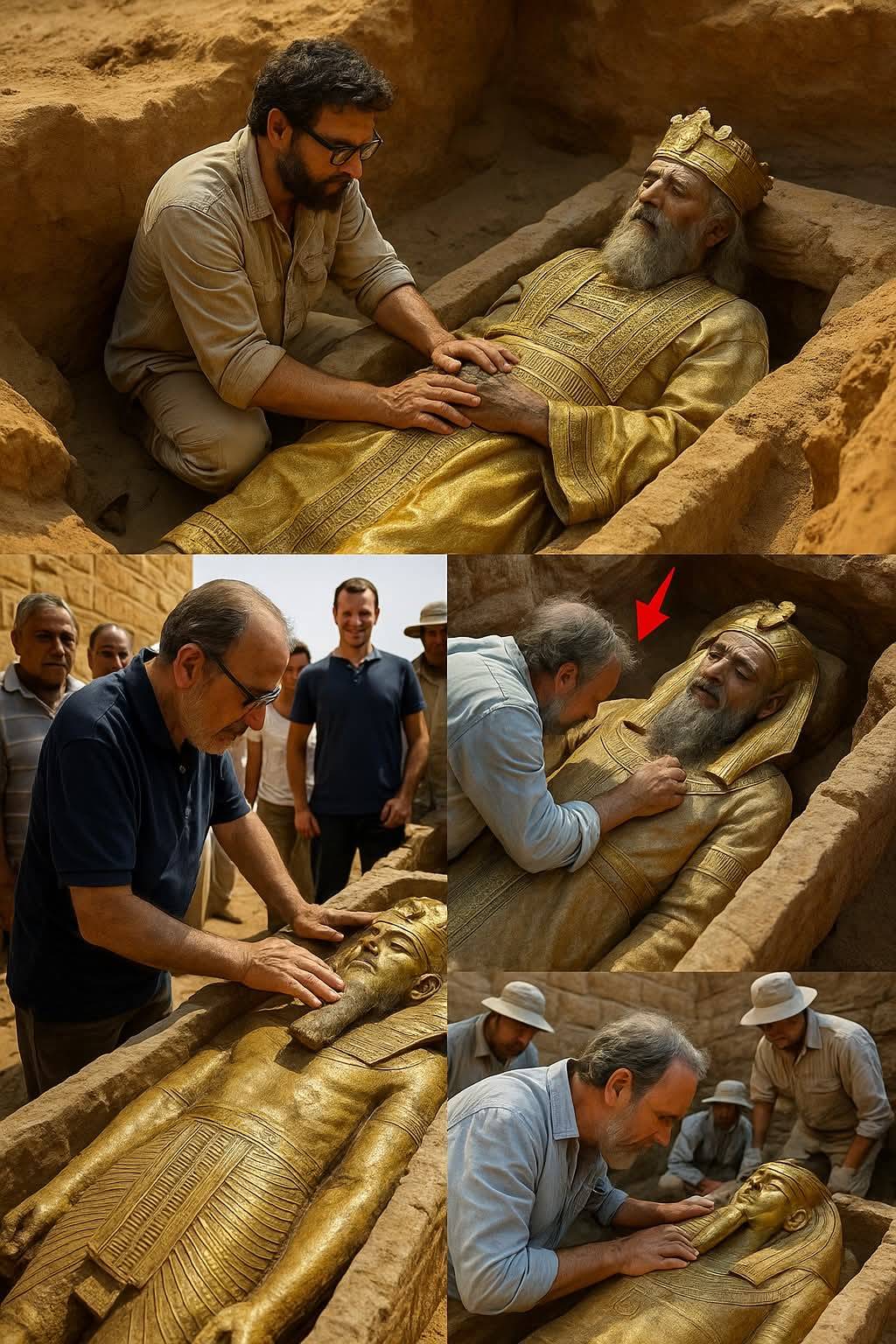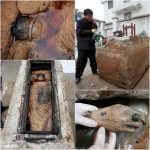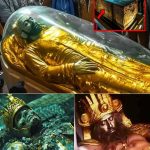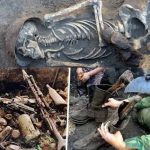BREAKING: Pharaoh Djoser’s Perfectly Preserved Mummy Found

In an unprecedented archaeological breakthrough, the perfectly preserved mummy of Pharaoh Djoser has been discovered, resolving a 4,600-year-old mystery surrounding the legendary king and his immense treasures. Revered as the architect of Egypt’s first pyramid—the Step Pyramid at Saqqara—Djoser’s disappearance has puzzled historians for centuries. This discovery not only sheds light on the pharaoh himself but also provides invaluable insights into Ancient Egypt’s funerary practices, wealth, and political influence during the Third Dynasty.
The Discovery

The mummy was uncovered in a previously unexplored section beneath Saqqara, remarkably intact after millennia. Experts note that the preservation exceeds expectations, with facial features, skin texture, and even hair remarkably well-maintained. Surrounding the pharaoh were treasures described in ancient texts but never previously located, including gold ornaments, ceremonial jewelry, and intricately decorated relics.
The discovery validates long-standing historical records that hinted at Djoser’s wealth and the grandeur of his burial. Researchers believe the coffin and treasure chamber were intentionally concealed, likely to protect the pharaoh from tomb robbers—a persistent problem in ancient Egypt. The meticulous preservation offers an unprecedented opportunity to study the burial methods and materials employed by artisans of the Third Dynasty.
Historical Significance
Pharaoh Djoser is celebrated for commissioning the Step Pyramid, the earliest colossal stone structure in Egypt, which laid the foundation for subsequent pyramids and monumental architecture. The rediscovery of his mummy allows historians and archaeologists to connect architectural innovation with cultural, religious, and political influence.

The treasures accompanying the mummy reveal insights into Ancient Egyptian metallurgy, craftsmanship, and artistic sensibilities. Gold artifacts, ceremonial items, and intricately carved amulets demonstrate a culture of sophistication and wealth, while inscriptions provide context about Djoser’s reign, achievements, and spiritual beliefs.
Funerary Practices and Preservation
The remarkable state of preservation underscores the advanced embalming techniques of Ancient Egypt. Experts note that the combination of resins, oils, and linen wrappings used on Djoser’s body likely contributed to its survival over millennia. Such preservation provides invaluable data for Egyptologists studying mummification practices, including methods for maintaining the integrity of soft tissues, facial features, and even jewelry within the tomb.
Moreover, the find offers insights into the spiritual beliefs of the time, including concepts of the afterlife, divine kingship, and the role of treasures in ensuring eternal protection for the deceased.
Global Impact
The discovery of Djoser’s mummy and treasures has captured worldwide attention, promising to redefine understanding of early dynastic Egypt. Museums, researchers, and historians are eager to analyze the artifacts, which will contribute to exhibitions, educational programs, and ongoing studies of ancient Egyptian civilization.
Conclusion
The perfectly preserved mummy of Pharaoh Djoser is a landmark discovery that resolves a 4,600-year-old mystery and opens new avenues for understanding Ancient Egypt. From the pharaoh’s treasures to the advanced mummification techniques, this find offers unparalleled insight into one of history’s most influential rulers. As scholars continue to study the mummy and accompanying artifacts, the world gains a vivid glimpse into the life, death, and legacy of the architect of the Step Pyramid—a ruler whose influence resonates across millennia.










